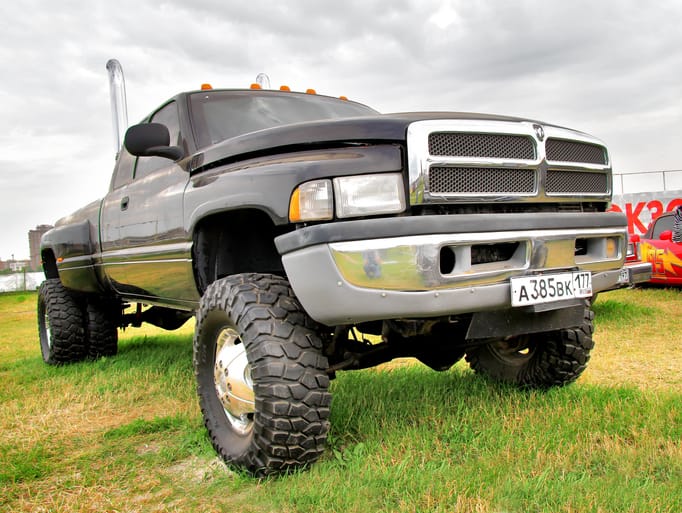The Dodge Dakota: A Look Back at a Mid-Size Pickup Pioneer

The Dodge Dakota, later known briefly as the Ram Dakota, carved a niche for itself as a mid-size pickup truck in the American market. Introduced in 1986 by Chrysler's Dodge division, it offered a maneuverable alternative to full-size trucks while boasting greater capability than compact pickups. This article explores the history, features, and legacy of the Dodge Dakota.
A Mid-Size Contender Emerges (1986-1996):
The Dakota's arrival coincided with a decline in demand for large trucks due to rising fuel prices. Chrysler saw an opportunity for a mid-size option that could handle daily duties without guzzling gas. The first-generation Dakota (1987-1996) impressed with its unit-body construction, which provided a smoother ride compared to traditional body-on-frame trucks. It offered two cab styles: regular cab and extended cab. Bed lengths varied from six to eight feet, catering to different cargo needs.

Engine options throughout the first generation included a 2.2L I4, a 2.5L I4, a 3.9L V6, and a powerful 5.2L V8. Power ranged from sufficient for daily commutes to capable enough for light towing. Manual and automatic transmissions were available. Notably, 1989 saw the introduction of the Dakota convertible, a unique offering that didn't last long but captured the attention of open-air enthusiasts.
Safety features in early Dakotas were basic, with antilock brakes (ABS) becoming optional later in the generation. However, the Dakota earned praise for its comfortable ride, good handling, and decent fuel economy for a truck. It carved out a loyal following among those seeking a versatile and maneuverable pickup.
Refinement and Reimagination (1997-2008):
The second-generation Dakota (1997-2008) saw a significant redesign. The boxy look gave way to a more rounded and modern exterior. The interior received an upgrade in terms of quality materials and ergonomics. New engine options were introduced, including a 2.7L I4, a 3.7L V6, and a top-of-the-line 4.7L V8. These engines offered improved performance and better fuel efficiency compared to the previous generation.
This generation also saw the introduction of the Quad Cab, a four-door crew cab configuration that offered increased passenger space for growing families. Safety features improved with standard ABS and the availability of airbags. Trim levels ranged from the basic ST to the luxurious SLT, catering to a wider range of budgets and preferences.

The Dakota continued to be a popular choice for those seeking a comfortable and capable mid-size truck. It offered a good balance of utility, affordability, and everyday practicality.
A Final Chapter Under the Ram Badge (2009-2012):
In 2009, Chrysler separated its truck division into the Ram brand. The Dakota continued production for a few more years under the Ram Dakota badge. This final generation saw minor changes, with a focus on value and capability.
The Dakota's production ended in 2012. The market had shifted towards larger and more powerful trucks, and the Dakota, despite its loyal following, couldn't compete.
Legacy of the Dodge Dakota:
The Dodge Dakota left its mark on the automotive landscape. It proved that mid-size trucks could be comfortable, capable, and fuel-efficient. It offered a compelling alternative to full-size trucks for those who didn't need the extra heft but still desired a truck's utility.
The Dakota's influence is evident in the continued popularity of mid-size trucks today. Trucks like the Chevrolet Colorado, Toyota Tacoma, and Nissan Frontier all owe a debt to the Dakota, which paved the way for this successful segment.
Looking Forward:
The Dodge Dakota may be gone, but its spirit lives on. Mid-size trucks are now a major force in the automotive industry, offering a blend of practicality, comfort, and capability that resonates with many drivers. The Dakota's legacy is a reminder that even in a market dominated by large trucks, there's always room for a well-executed mid-size option.
